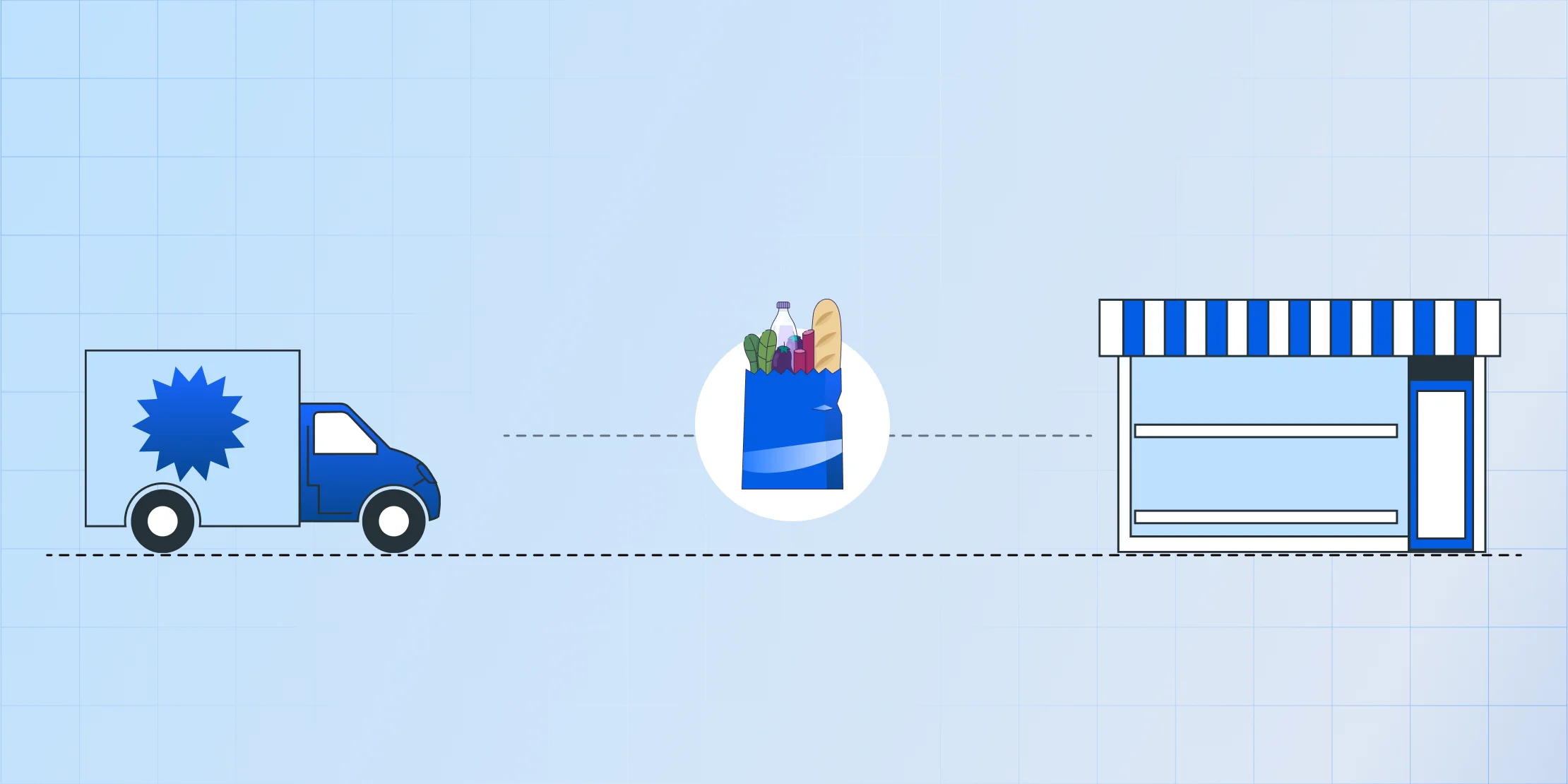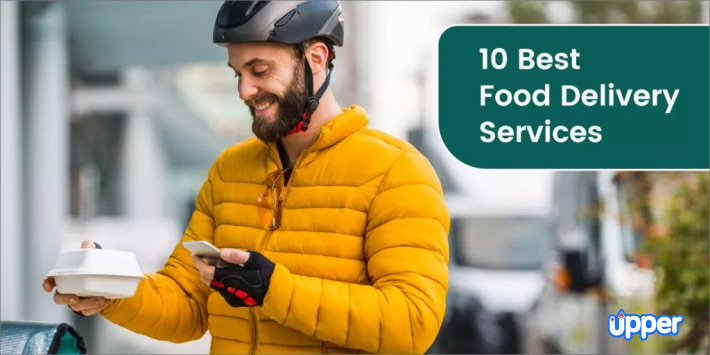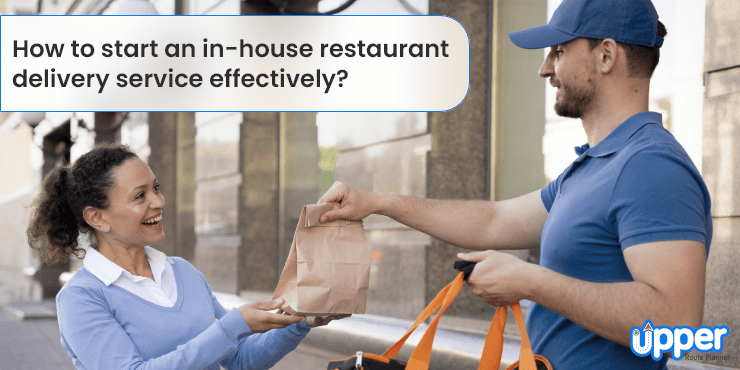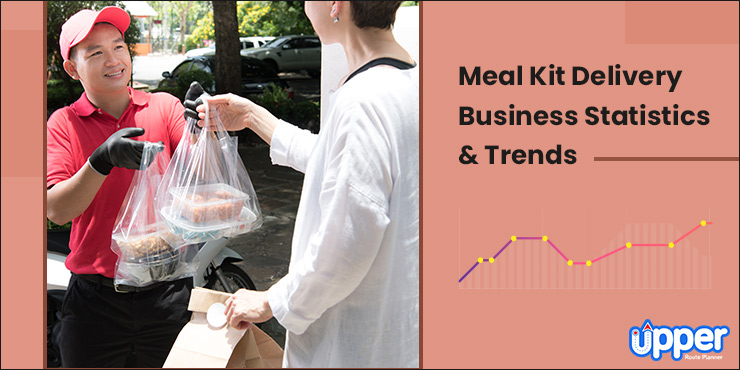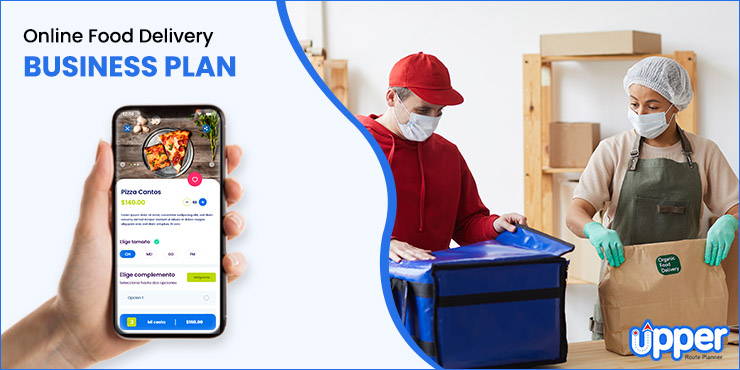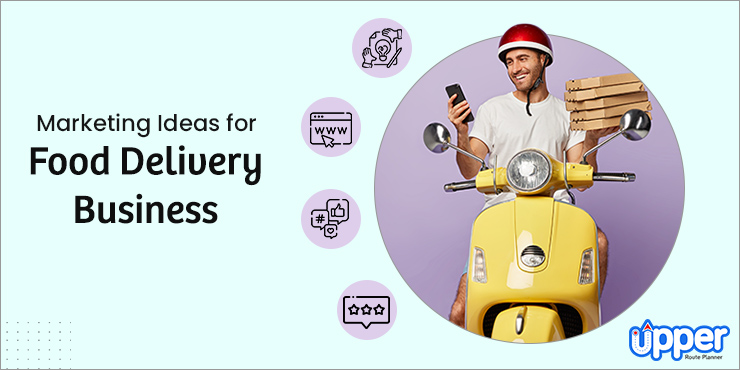We get it. The food and beverage distribution industry is tough. You must keep your products fresh, meet strict quality standards, and follow countless regulations. One misstep can spell disaster.
Think about it—what if your deliveries were always timely and your products handled perfectly? No more stress over inefficiencies, high costs, or unhappy customers. That’s the dream, right?
We know precision, punctuality, and quality control are crucial for you. It’s not just about keeping the business running; it’s about protecting your reputation and keeping your customers happy.
We’re here to help make that dream a reality. With the right tools, you can streamline your operations, reduce costs, and ensure your customers are always satisfied. Let’s dive into how you can make your distribution process smooth and efficient, so you can focus on growing your business.
Forget Spaghetti Routes, Optimize Routes for Your Entire Team with Upper
Start a 7-Day Free Trial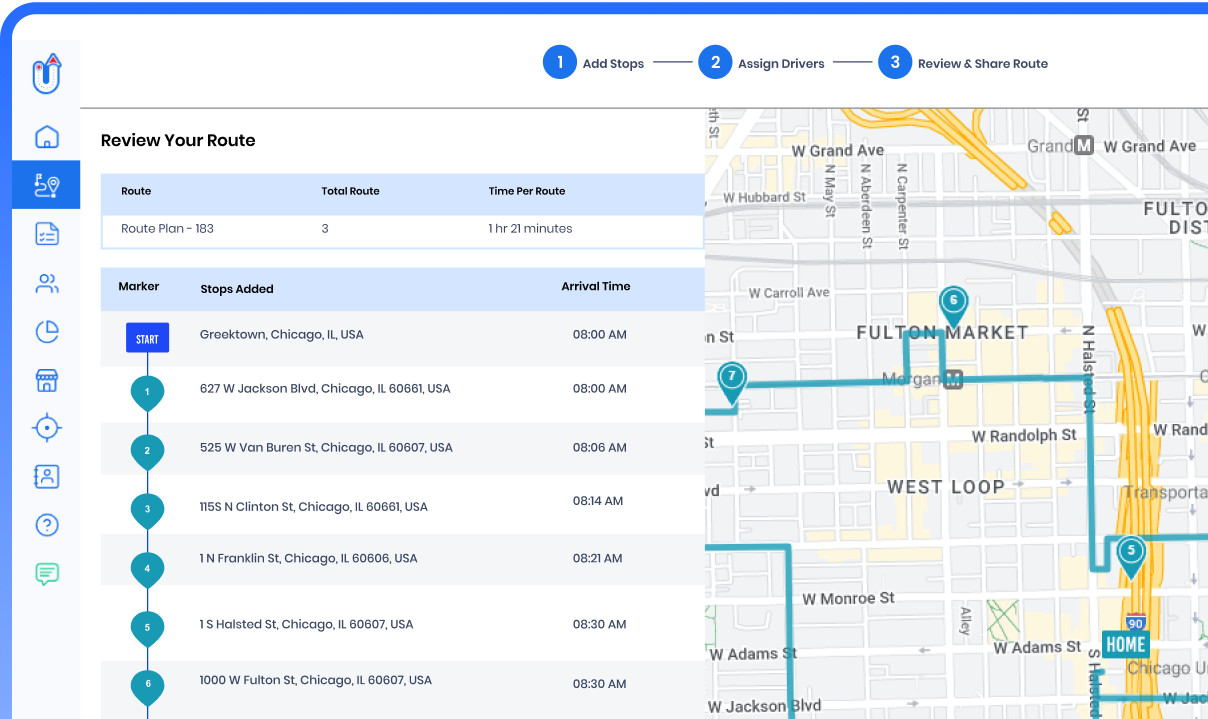
Table of Contents
What is Food and Beverage Distribution?
Food and beverage distribution is the process of delivering food and beverage products from manufacturers’ places to the consumers’ doorstep. It involves supply chain activities like receiving and storing inventory, fulfilling orders, and delivering products to customers.
The products are delivered either through the involvement of middlemen, including wholesale food retailers, distributors, and retailers, or directly to customers by shipping to their homes.
In both cases, the end goal should be to ensure the products arrive in excellent condition, maintain their freshness and quality, and comply with all relevant safety and regulatory food safety standards.
Meet Upper - Your Digital Distributor
Known for accelerating delivery efficiency, ensuring real-time visibility, timely deliveries, and transparent communication between clients, Upper empowers you to navigate the complexities of food and beverage distribution.
Different Types of Distribution Channels
There are several types of food and beverage distribution channels:
- Direct distribution: Selling directly to consumers, like farm-to-table.
- Indirect distribution: Involving middlemen like wholesalers and retailers, where the products go through several processes like manufacturing, distributing, transporting, advertising, and selling food products.
- Dual distribution: Mixing direct and indirect methods for flexibility.
- Digital distribution: Selling online through your site or e-commerce platforms.
Apart from the several channels mentioned above, the four main channels of food and beverage distribution are:
- Cash and carry distributors: These operate warehouses where food-service operators can purchase products directly. It is commonly used by restaurants and caterers.
Costco operates an international chain of membership-based warehouse clubs where food service operators, such as restaurants and catering companies, can purchase products in bulk directly.
Costco offers a wide selection of food and beverage items at wholesale prices, including produce, meat, dairy, and packaged goods, allowing its business customers to save on their procurement costs.
- Redistributors: Once products are purchased in bulk from manufacturers, they are sold in smaller quantities to smaller distributors.
US Foods is a leading food service redistributor in the United States. The company purchases large quantities of food and beverage products from manufacturers and then resells them in smaller quantities to smaller distributors, such as independent restaurants and caterers.
- Specialty distributors: Focus on specific product categories, such as halal or kosher foods. Here it is ensured that products meet specific handling and storage requirements.
Midamar Corporation is a specialty distributor of halal-certified food products. The company sources halal-compliant meat, poultry, and other food items from approved suppliers and ensures they are handled and stored according to Islamic dietary requirements. Midamar ensures convenience store distribution to distribute these specialized products to halal-focused retailers, restaurants, and institutions.
- Broadline distributors: Handle various products and serve large clients like grocery chains.
Sysco is one of the largest broad-line food service distribution services in the United States. It serves a diverse customer base that includes restaurants, healthcare facilities, schools, and hospitality businesses.
It offers a comprehensive portfolio of food and non-food items, ranging from fresh produce and proteins to cleaning supplies and kitchen equipment.
The choice of distribution channel depends on factors such as the type of product, the target market, and the resources available to the business.
Challenges in Delivering Food and Beverage Products
- Maintaining quality and freshness: Ensuring food products remain fresh and safe from production to sale is crucial. This requires proper handling, storage, and transportation under optimal conditions.
Upper optimizes routes to minimize transit times, ensuring perishables are delivered swiftly. It also supports route planning for temperature-controlled deliveries, preserving quality and freshness throughout the journey.
- Regulatory compliance: Distributors must adhere to many food safety and transportation regulations such as the Food Safety Modernization Act (FSMA), which can vary by region and product type. This involves keeping up-to-date with laws and ensuring all processes meet these stringent requirements.
Upper helps maintain detailed records of delivery routes, times, and conditions, ensuring all processes are documented and compliant with the latest regulations.
- Logistical complexities: Coordinating efficient transportation routes, managing warehouses, and ensuring timely deliveries are complex tasks that require advanced logistics planning. Delays or inefficiencies in the supply chain can lead to significant losses and customer dissatisfaction.
Upper uses advanced algorithms to streamline route planning and adjust routes automatically in real-time, reducing logistical complexities and improving supply chain efficiency.
- Cost management: Balancing operational costs with maintaining high service levels is a perpetual challenge. This includes managing delivery costs, labor, storage, and the cost of goods sold.
Upper reduces delivery costs by optimizing routes, which lowers fuel consumption, decreases vehicle wear and tear, and reduces labor costs.
- Improve customer satisfaction: Meeting the diverse needs of customers, from large wholesale grocers to small restaurants, involves maintaining high levels of service and flexibility. Customer expectations for timely and accurate deliveries are higher than ever.
Upper enhances customer satisfaction through real-time tracking and updates, providing accurate ETAs and the flexibility to adjust delivery schedules as needed.
- Supply chain disruptions: Events such as natural disasters, pandemics, or geopolitical issues can disrupt supply chains, making it difficult to maintain consistent service and product availability.
Upper’s flexible and responsive route planning allows for quick adaptations to external disruptions, ensuring consistent service and product availability despite challenges.
Exploring Strategies to Streamline Distribution
- Build strong relationships, and develop trust and mutual respect with distributors and retailers through regular communication and incentives.
- Quickly adapt to market demands, stay agile, and be responsive to consumer trends and feedback to remain competitive.
- Leverage technology and use modern route scheduling software solutions for real-time inventory and delivery tracking, demand forecasting, and efficient supply chain management.
- Understanding partner needs and aiming for win-win deals to secure beneficial long-term partnerships
How Upper’s Technology Solutions Address Distribution Challenges
Technology plays a pivotal role in modernizing and optimizing food and beverage distribution. Here’s a detailed look at various technological solutions and their impact:
1. Integrating route planning and optimization software:
Why must you do everything independently when route planning and optimization software like Upper can do it all?
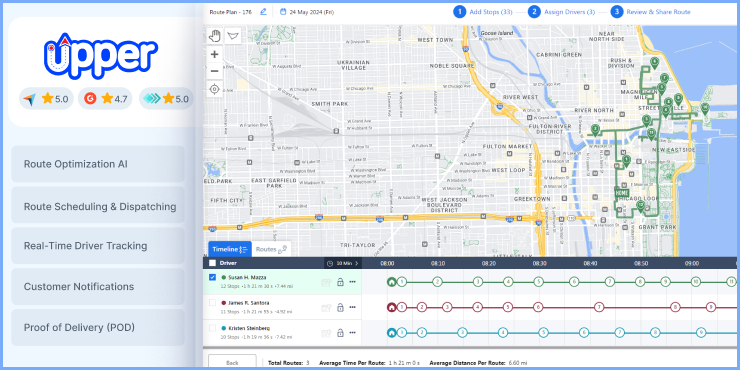
Upper is a powerful tool designed specifically for food and beverage distribution. It helps businesses optimize their delivery routes, saving time and fuel costs. By considering factors like order volume, delivery deadlines, traffic conditions, and driver availability, Upper creates efficient routes, ensuring timely deliveries and customer satisfaction.
Here are some of the route planning and optimization software capabilities offered by Upper that your business needs:
- It automatically generates the most efficient delivery routes based on multiple factors, such as distance, traffic conditions, and delivery time windows.
- The software dynamically adjusts routes in real-time to account for unexpected changes, such as traffic congestion, road closures, or last-minute order modifications.
- The platform provides comprehensive reporting and analytics on delivery performance, including metrics like delivery times, distances traveled, and customer feedback, if any.
- It offers tools to manage drivers’ schedules, track their performance, and ensure they follow the planned routes.
- The software enables customers to receive automated notifications about their order status, providing real-time visibility and estimated delivery times.
- Ensures that each delivery vehicle is utilized to its maximum capacity, optimizing the number of deliveries per trip and reducing operational costs.
- Allows bulk SMS notifications to customers, informing them about their delivery status, estimated arrival times, any specified discount offers, or any potential delays.
- Enables the setting of specific delivery zones, assigns them to drivers who are more familiar with those areas, and streamlines operations ensuring efficient routing within designated areas.
Food and Beverage Distribution Digitized
Streamline operations, optimize routes, perform real-time tracking and automated alerts, and accelerate customer satisfaction all under one roof- Uber.
2. Using Electronic proof of delivery (ePOD)
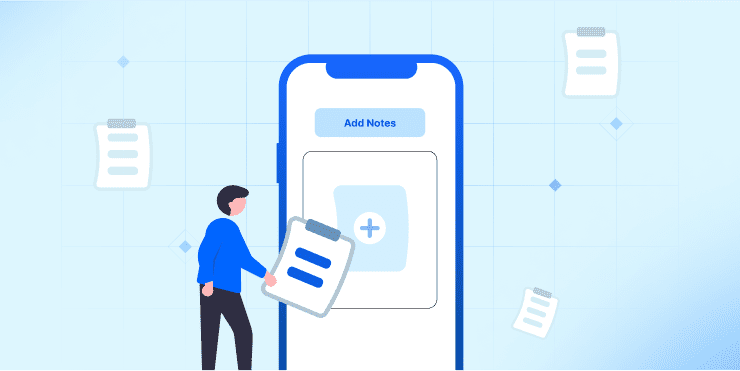
Electronic proof of delivery systems capture digital signatures and photographs upon delivery, providing real-time updates and verifiable proof of service. This reduces paperwork, minimizes disputes, and enhances accountability.
- Benefits: Increased accuracy in delivery confirmations, reduced administrative burden, and improved customer trust.
- Example: Many modern logistics platforms offer ePOD functionalities, ensuring every delivery is documented and traceable.
No More Delivery Disputes
Upper’s paperless proof of delivery lets you record recipient signatures, timestamps, & delivery photos digitally.
3. Facilitate clear communication
Advanced communication tools enable seamless coordination between drivers, dispatchers, and customers. Real-time updates and notifications inform all stakeholders about delivery statuses, potential delays, and other critical information.
- Benefits: Improved operational transparency, enhanced customer service, and quicker resolution of issues.
- Example: Mobile communication apps and integrated messaging systems in logistics software enhance connectivity across the distribution chain.
Team Chatting Got Easier
Now you can message all your drivers in one place without switching apps. Keep everyone connected, solve problems faster, and run your operations smoother than ever.
4. Fleet management
Fleet management systems provide comprehensive oversight of vehicle fleets, including maintenance schedules, fuel usage, and driver performance. These systems use GPS tracking and telematics to monitor and manage fleet operations in real time.
- Benefits: Enhanced fleet efficiency, reduced downtime, and improved safety compliance.
- Example: Fleet management software helps distributors keep their vehicles in top condition and ensures efficient resource allocation.
5. Improving real-time traceability
Traceability systems track the origin and journey of food products through the supply chain, ensuring transparency and safety. Technologies like blockchain and IoT are increasingly used to provide detailed tracking of food items from farm to table.
- Benefits: Enhanced food safety, compliance with regulatory standards, and increased consumer confidence.
- Example: Blockchain technology allows for immutable records of each step in the supply chain, providing unparalleled traceability and accountability.
6. Warehouse management system (WMS)
Warehouse management systems automate and optimize warehouse operations, including inventory tracking, order picking, and storage management. These systems ensure efficient use of space, accurate inventory levels, and quick order fulfillment.
- Benefits: Reduced labor costs, improved inventory accuracy, and faster order processing.
- Example: A robust WMS integrates with other supply chain systems to provide a holistic view of warehouse operations, ensuring that food and beverage products are stored and handled efficiently .
Frequently Asked Questions
Sysco Corporation is one of the largest food distributors in the United States. It serves a wide range of customers in the food service industry, including restaurants, healthcare facilities, educational institutions, and more.
A food and beverage distributor is responsible for sourcing, purchasing, storing, and delivering food and drink products to customers, such as restaurants, hotels, retail stores, and institutions.
Delivery schedules vary by distributor and location, ranging from daily to weekly deliveries. It’s best to check with your specific distributor for their schedule.
Many distributors have minimum order requirements to optimize delivery routes and reduce costs. The specific minimum can vary.
Conclusion and Next Steps
The food and beverage distribution is a complex and vital component of the global economy, supporting a vast network of suppliers, distributors, and consumers. This industry faces numerous challenges, from maintaining product quality and compliance with regulations to managing logistical complexities and rising customer expectations.
However, with the right strategies and technological solutions in hand, these obstacles can be turned into opportunities for the overall success of a food distribution company.
